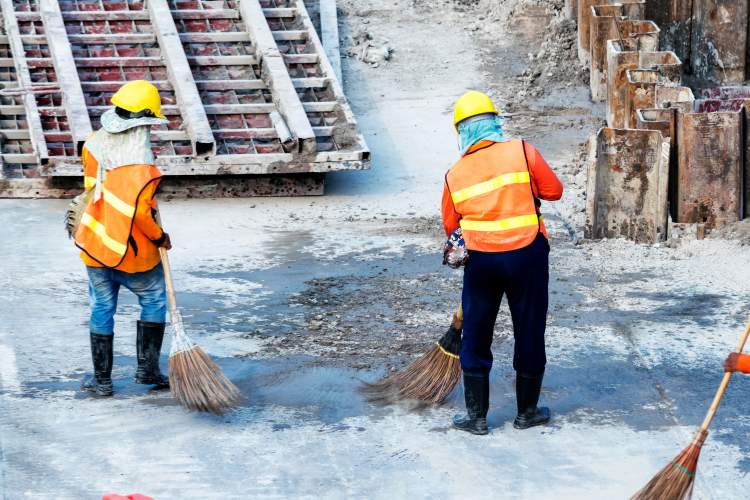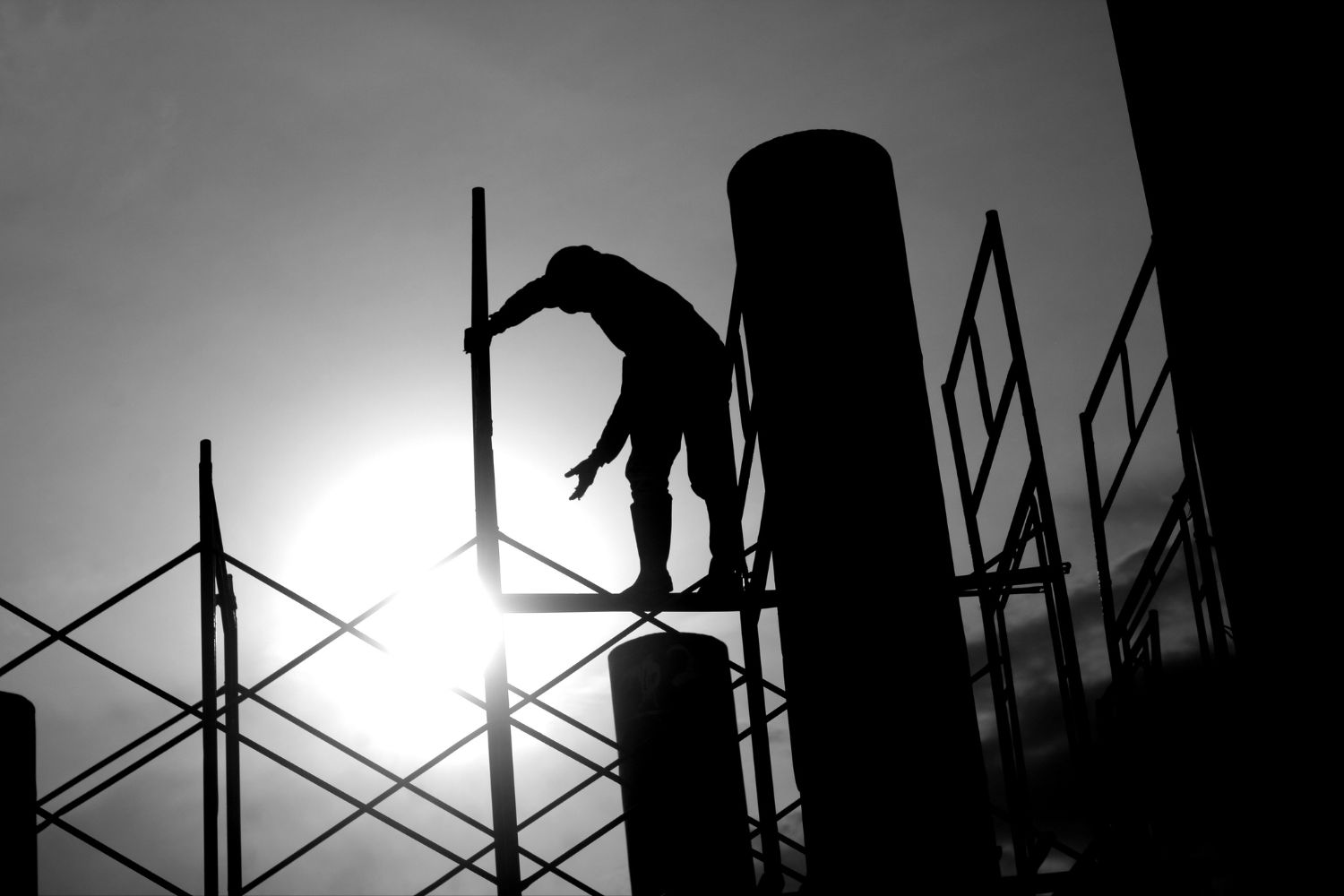The most successful contractors, both GC’s and subcontractors, are constantly on the lookout for ways to improve their operations, become more profitable or grow their construction business. To stay competitive in the construction industry, you can’t simply do things the way they’ve always been done — rather, you should strive to do more of the things that work and stop doing the things that don’t.
That’s the foundation of lean construction. Lean construction is a project management approach that aims to reduce time, effort, and waste, while enhancing customer value. By implementing the principles of lean construction, you can deliver more value to your customers — and likely win more projects as a result.
What Is “Lean Construction”?
Traditional construction models tend to be siloed. That is, every individual party involved in the project — whether that’s subcontractors, material suppliers, architects, or engineers — strive to optimize just their part of the project.
Lean construction is a revolutionary production management approach designed to collectively maximize value and minimize waste across the entire project scope. This relationship-oriented approach brings together everyone involved in the project to get it completed quicker while using less material and resources, therefore, reducing costs.
At the center of this approach is mutual respect for everyone involved. Lean construction recognizes that it is people who add value to a project, so the approach focuses on recognizing the contributions of every party’s individual role. Lean construction also promotes the idea of doing things right the first time, which can help eliminate waste and maximize the time and effort that goes into the construction project.
What Are the Principles of Lean Construction?
While lean construction can be applied somewhat differently from project to project, it typically involves the following six main components.
1. Identify Value
The first principle of lean construction is identifying true value for the customer. In a traditional construction approach, the customer specifies what they want you to build — and you deliver exactly that.
Lean construction, however, aims to dive further into the customer’s needs and understand not only what they want to build, but why they want to build it that way. In other words, the team aims to understand value from the customer’s point of view. That allows the people involved in the project to provide guidance and advice — which can shift the project to deliver more value than what the original concept could.
In this phase, lean construction brings together all stakeholders of a construction project, including the owner, engineers, architects, general contractor, subcontractors, and even suppliers.
2. Define the Value Stream
Once you understand what the customer values, you can structure the project to deliver that value. That requires taking a look at the steps, materials, equipment, and labor, and determine if there is anything involved that does not deliver value — and should therefore be eliminated.
3. Eliminate Waste
One of the major components of lean construction is waste elimination. However, this doesn’t only refer to material waste. Construction projects can be wasteful in many ways, including:
- Defects – when work was not done correctly the first time around, resulting in the need to redo work, and wasting materials and time.
- Overproduction – occurs when tasks are finished earlier than anticipated
- Waiting – most common when workers are ready to start, but materials have not been delivered to the jobsite, sometimes due to long lead times.
- Wasting talent – contractors tend to have a wide range of skills and experience, but are not always assigned the right job to match their skills or talent
- Transportation of materials – when materials hit a jobsite before they’re needed
- Inventory – materials that are available but not needed is considered having excess inventory, which ties up budget and requires additional storage.
- Motion – Motion that isn’t necessary between workers, materials, equipment, can create a waste of motion on a jobsite.
- Overprocessing – Happens when activities that add no value are implemented
4. Create a Continuous Workflow
Many of the wasteful elements described above can be eliminated with another core principle of lean construction: continuous workflow. Ideally, workflow is designed so that there are no gaps, or wasted time, between steps of the project. The sequence in construction is incredibly important, and ensuring the appropriate steps happen in sequential order to keep things moving on time is critical. Contractor management software can serve as a vital tool to tightening your workflow and overall project management.
5. Establish “Pull”
Lean construction embraces a concept called “pull” planning. This is when the stakeholders involved in the project start with the end goal and work backward to plan and schedule milestones. This requires a high level of collaboration, which helps ensure that everyone is on the same page to deliver each piece of the project on time, so the next party can begin their role.
6. Continually Seek Improvement
One final and critical component of lean construction is continuous improvement. Those who embrace the lean construction approach believe that there is always room for improvement (and further waste elimination). Stakeholders aim to seek out those improvements and act upon them during the current project, as well as apply them to future projects. Obtaining financing for your construction business is another example of how to continually drive improvement. Financing frees up cash flow and enables you to take on larger, more profitable projects
How Do Lean Principles Benefit Construction Projects?
Ultimately, implementing these principles can help reduce waste and increase value. Specifically, lean construction results in the following benefits:
- Cost control: In 2018, 600 million tons of construction and demolition debris were generated in the U.S. This is often because construction projects are organized inefficiently, and different stakeholders may be working on separate projects simultaneously. Through lean construction, teams are more aligned and aware of how to reduce the use (and waste) of materials. This can save costs on the front end and reduce waste by the completion of the project.
- Enhanced safety: By reevaluating potential areas for waste, stakeholders can identify ways to become more efficient and safe during the course of a project. For example, if workers have to repeatedly retrieve lumber from 20 feet away, they not only waste time taking multiple trips back and forth, but they also risk injury and over-exertion. By applying lean construction principles, you can avoid this potential risk and keep your workers safe.
- Improved quality: When all teams are aligned regarding priorities, timeline, logistics, and materials, they are better equipped to quickly and accurately complete their portion of the project, as well as better plan for when their respective role will be needed.
How Does a Contractor Implement Lean Construction?
If you’re interested in adopting the principles of lean construction, the approach must start at the top. Project managers and general contractors must be at the forefront of the initiative. To be successful, you will need to:
- Establish strong relationships with subcontractors, suppliers, and other stakeholders: With established relationships based on trust and communication, you will have an easier time collaborating and communicating your vision for the project. This also makes it easier to get stakeholders involved in the project from the very beginning, when you will define value, establish timelines, and identify potential areas for waste reduction.
- Define benchmarks and measures of success: You’ve heard the adage, “What gets measured gets done” — and that’s especially important in lean construction. You must set benchmarks so that everyone involved on the project understands what will make the project a success. Whether this involves meeting certain deadlines, keeping waste under a certain percentage, or generating a specific profit, everyone needs to know what they’re aiming to accomplish.
- Commit to the overall goals: Initially implementing the principles of lean construction can be intimidating — so first, commit to the goals of waste reduction, increased value, and continuous improvement. Even if your first lean construction project doesn’t go completely to plan, keep those goals in mind. Take what works and apply it to the next project. Take what doesn’t work and improve upon it. Eventually, you will be able to apply the lean construction principles to each and every project — and you (and your customers) will reap the benefits.
Implementing the principles of lean construction can lead to reduced costs, increased efficiency, and enhanced value — and those can lead to satisfied customers, and more projects for your and your business.








